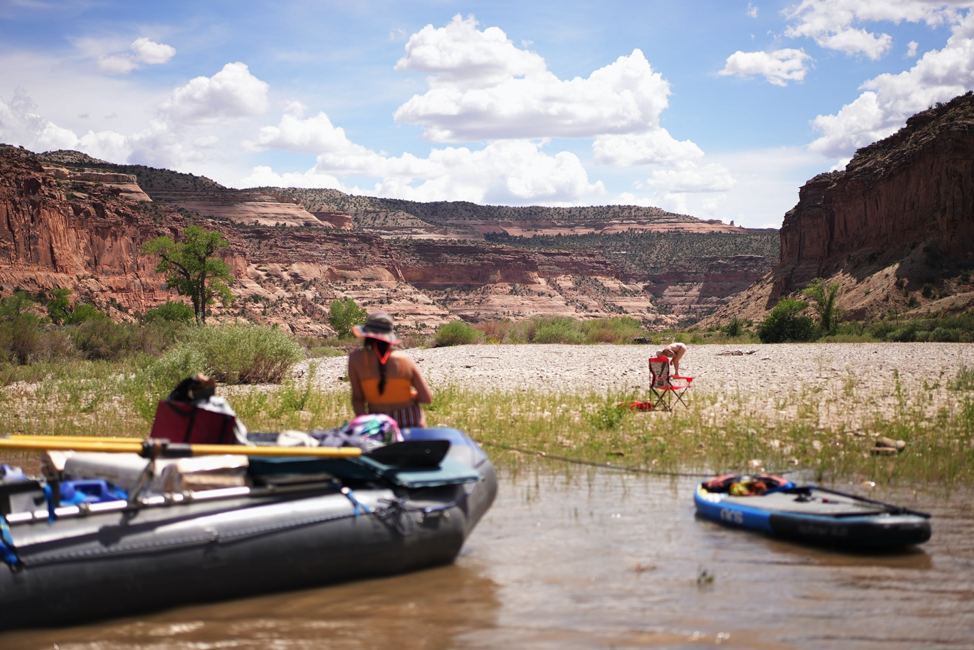Words and Images By Adam Weitzel
As soon as that summer sun starts hitting my skin, I start searching for water to play in. Not many things are better than a raft full of friends, food and gear to help escape the summer heat. It’s time to push off from shore and away from the daily scroll, the inbox, the commute and everything in between and head out for some river camping. When most people think of rafting, often the most extreme version comes to mind – class V rapids, helmet strapped tight, paddle in hand, feverishly scratching at the water’s surface to avoid down river obstacles. While exhilarating, this is not the type of raft trip I’m talking about. I’m talking about an oars under knees, koozie in hand, appetizers on deck, swimming hole search party type of raft trip. Where comfort is more important than weight, and distances are measured in cocktails instead of miles.
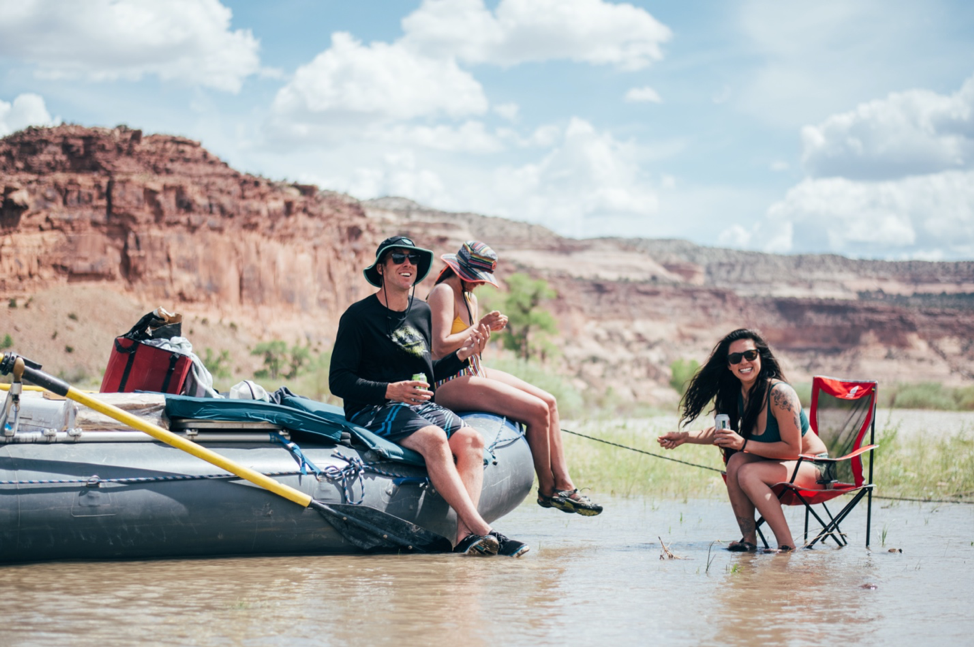
Now the first thing you’re going to need is a body of water to accommodate this type of rafting. Typically, a Class I or Class II section of a river is going to be your best bet. And depending on the flow or CFS of that particular river, will determine to best time of year for your adventure. American Whitewater is great place to start researching the runnable waterways in your area or throughout the US. They are an in-depth resource for specific river information as well as general rafting topics.
Ok, so now you’ve picked your waterway; what are the essentials you’re going to need for this?
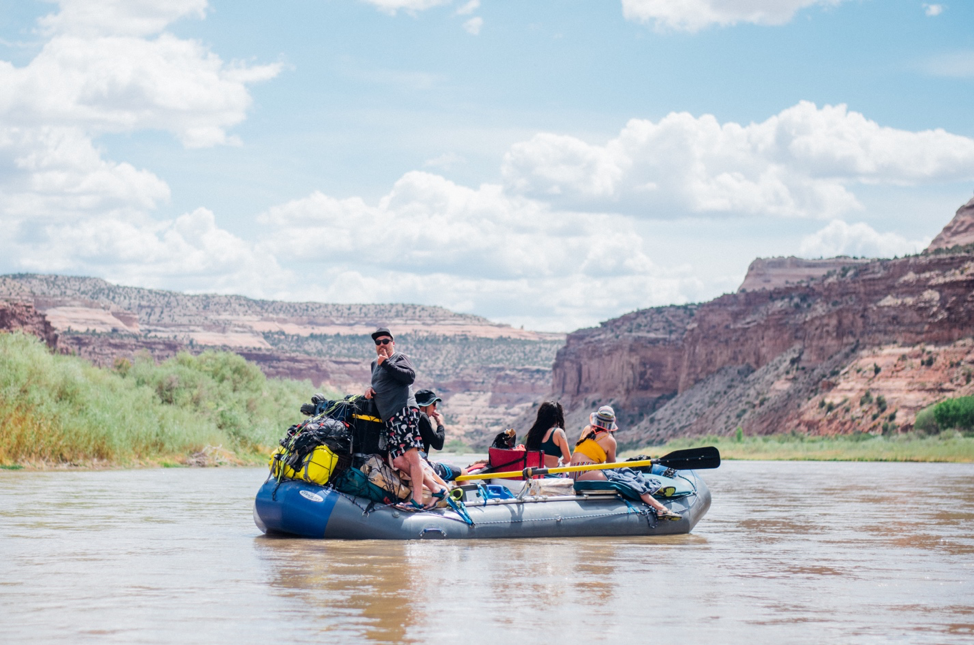
Raft
I’m going to go out on a limb and say that if you’ve read this far you probably don’t own your own raft. No biggie, plenty of outfitters rent all the proper gear you’ll need for this aquatic adventure. But a few things you will want to seek out for your rental is a self-bailing raft with a frame, dry box, and cooler. I wouldn’t be too worried about the size of the dry box as you can use totes as well for most trips like this, as water will never really soak your gear in calmer waters. Drybags (usually available for rent as well) are a great way to pack up your essential gear such as sleeping bags and not worry about moisture creeping in. Plus, they make great pillows during the day while sunbathing on the raft enroute to your next campsite.
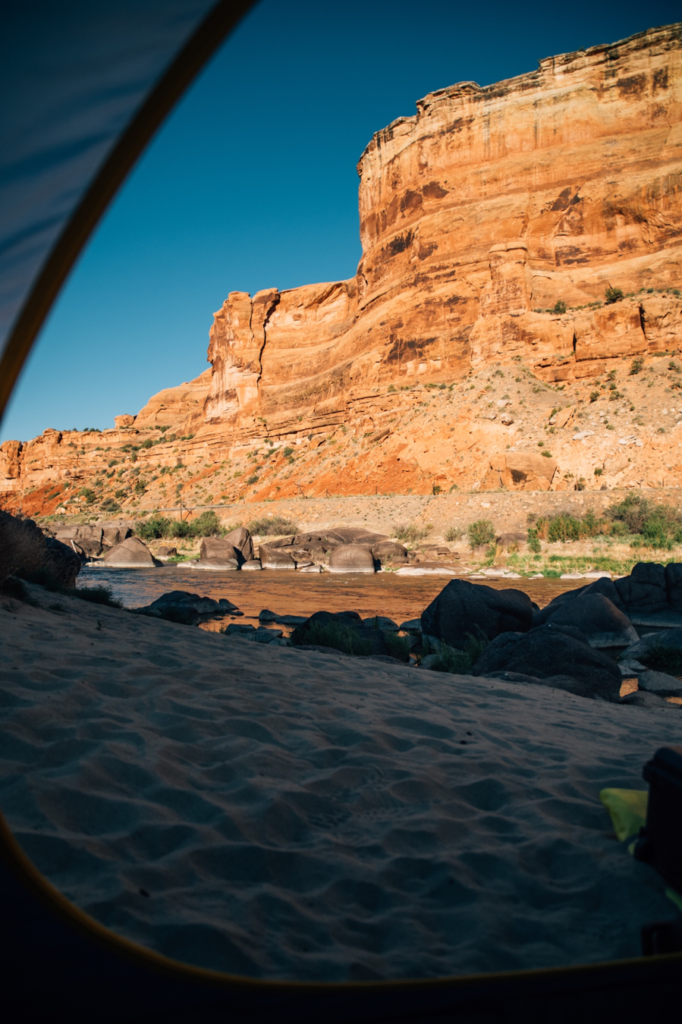
Groover
This is an essential item for river trips that you might not have heard of. A Groover is your restroom while on river trips to fully comply with pack it in & pack it out ethos. The beauty of exploring remote areas via the river is the rightly untouched natural landscape and part of our duty (yep, pun intended) as stewards of the outdoors is to preserve it for future generations. I get it, plenty of people have anxiety about using the restroom on a river trip but it’s not that different than your use to; except you get a new view for your morning business every day! Most overnight raft rental outfitters will offer groover rentals (as well as disposal service) and will talk you through the basics. It’s called a groover because it was originally an ammo can that was used for the receptacle and after use it would leave “grooves” in the user’s backside! We had some first time groover users on our trip but after Day 1 they were quite comfortable and even loved the canyon views for their morning #2. Packing it up and transporting really became the next worry for our new rafters but the new groovers are contained quite well and once strapped to the back of the boat, really were out of sight and out of mind. I often find the “where do I go #2” question the biggest barrier for a new rafter, or even backpacker to explore a new interest. But everybody has to poop and there’s nothing to be embarrassed about so always feel free to ask an outfitter or guide about any bathroom hygiene questions.
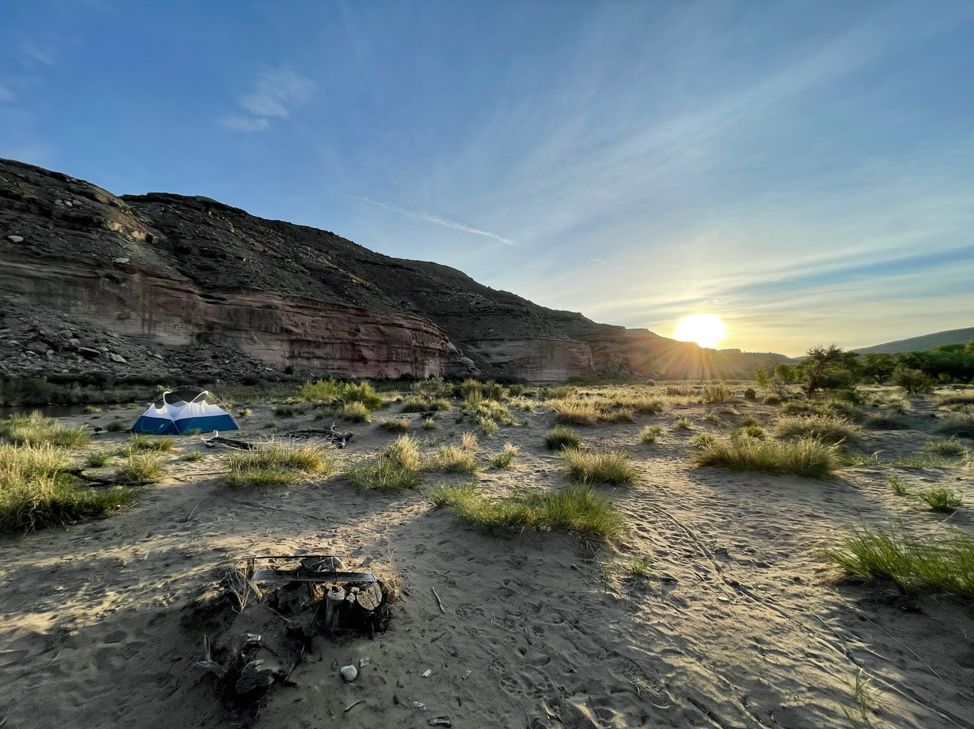
Tent
Like I mentioned before, weight really isn’t an issue for the boat, but size is a consideration. You want to be comfortable, but not overburdened with gear because you will be tearing down and setting up camp EVERYDAY. The Nomad 4 and Clearwing 3 became the logical choice for this trip. Easy to setup, wildly spacious yet still packs down small with the ingenious burrito bag, and they are the perfect tents to sleep under the stars without the rainfly. Another thing to consider is your group size and preferred sleeping arrangements as that will determine what tent will work best. Check out the wide selection of our tents to accommodate any size crew.
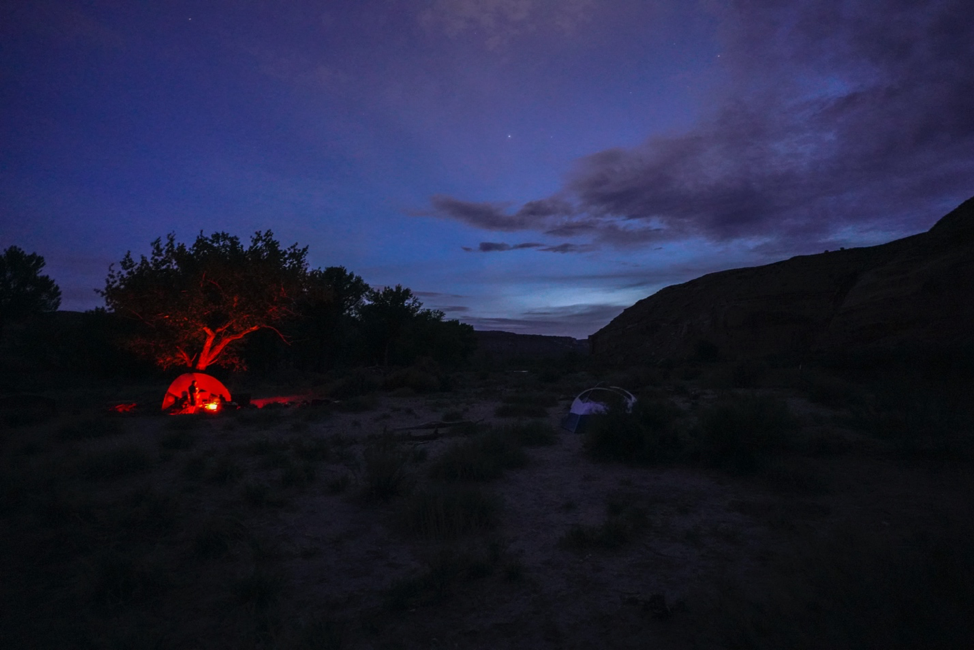
Sleeping Bag & Pad
Ok, this is where you can truly change the river camping game for yourself. Get a Zipperless sleeping bag! This patent pending Zipperless design integrates an oversized comforter and self-sealing foot vent that brings the comforts of your home bed out into the wilderness. The built-in sleeping pad sleeve is the unsung hero of this sleeping bag though, especially since I’m a side sleeper (my partner insists or else I snore). The sleeping pad sleeve allows me to fully sprawl out yet keeps me on the pad all night long. It’s the only sleeping bag I’ve genuinely felt “at home” in.
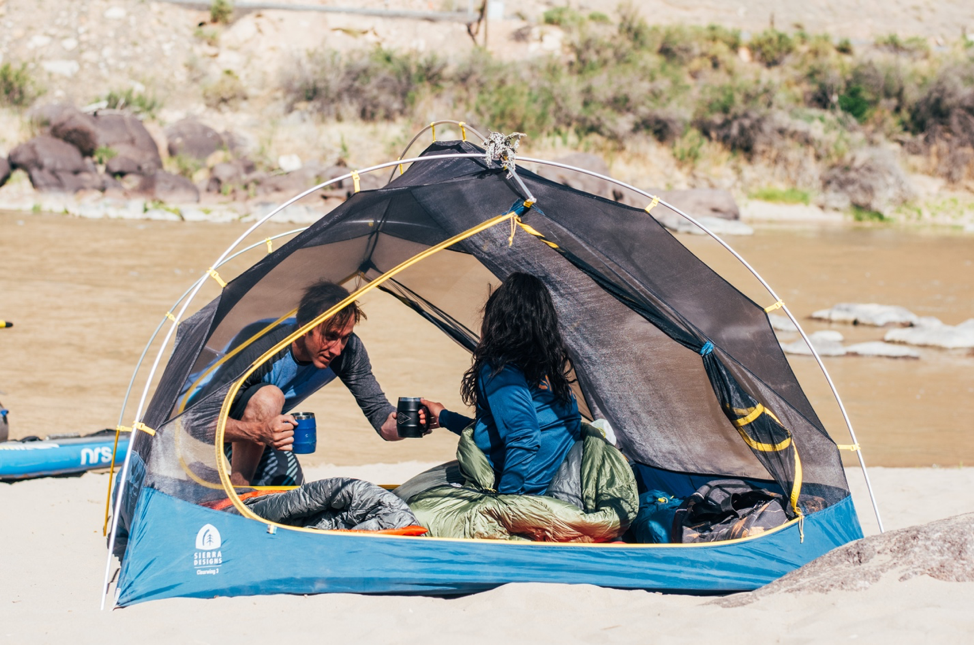
Day Pack
The great thing about slow water and plenty of time, is the potential for the side hikes! We had some pre-determined sights on ours mind, but any river camping experience usually has an amazing “backyard” for exploring. So, a versatile day pack is key, and the Flex Capacitor truly outperforms any other day pack. The expandable volume, “Y” suspension and padded hip & back panels make any load a breeze to carry. Definitely spend some extra research time on the area surrounding your campsite to maximize your time in nature. We usually planned to get our miles on the river done earlier and arrive at the campsite between 2 or 3pm. Then we would setup camp and go for a quick explore hike to enjoy some afternoon sunshine.
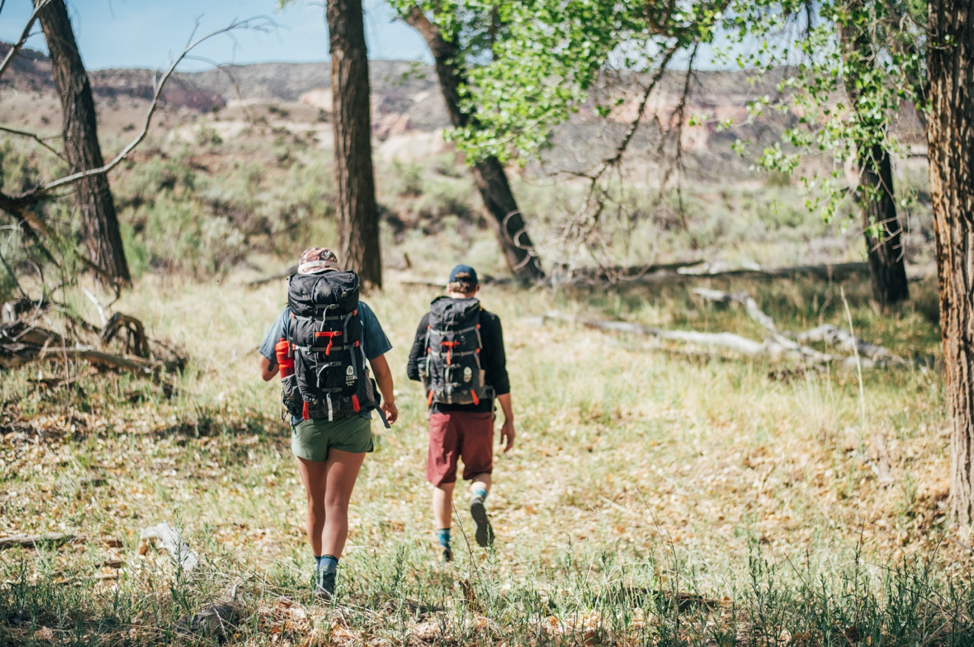
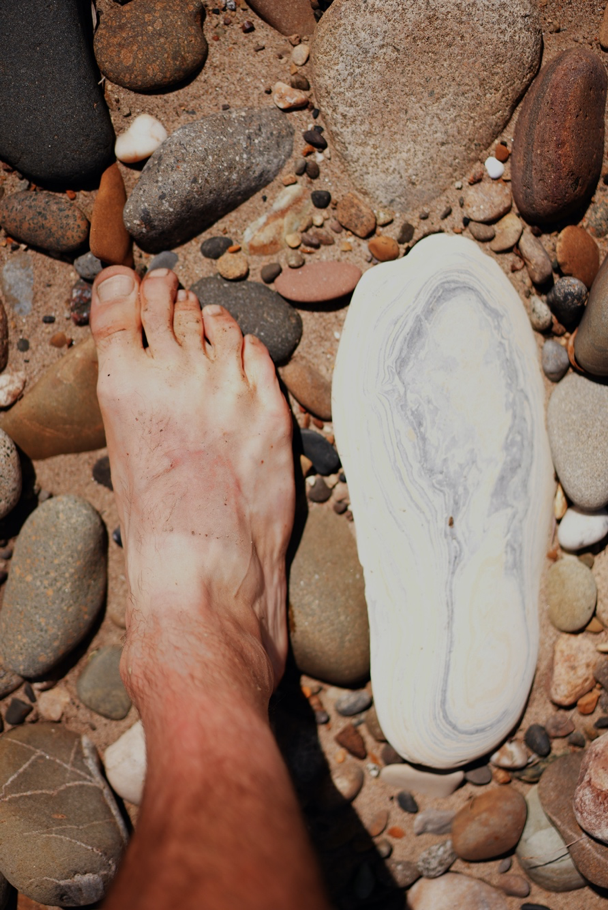
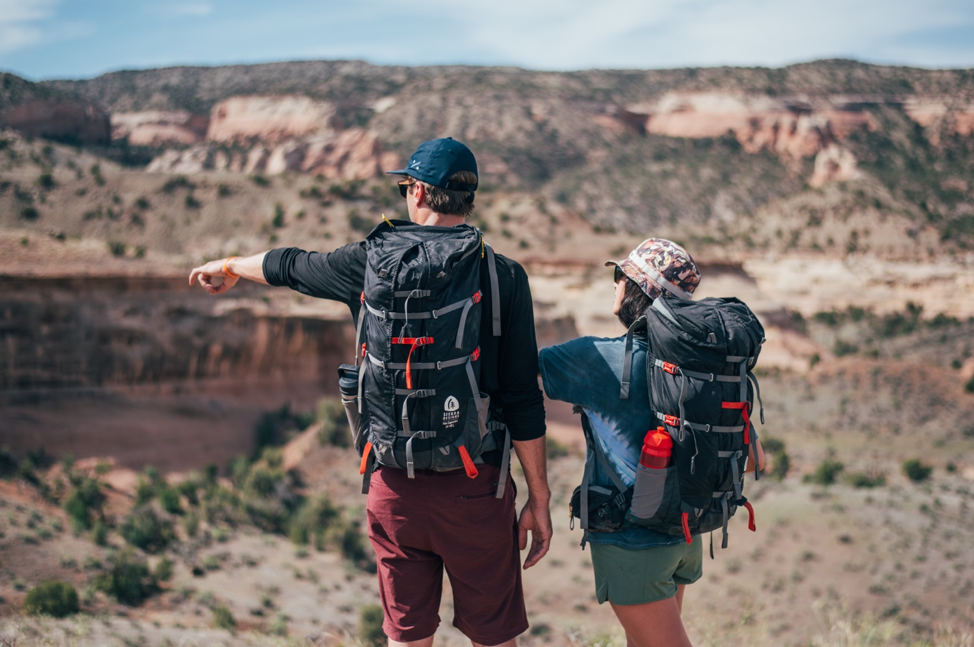
Food, Stove & Cookware
Bring it all! Again, with weight usually not an issue on a raft, you can bring all the comforts for your camping cuisine. I typically tend to pack the same type of cookware I would on a car camping trip. We brought 2 stoves, one with 2 burners, and one with a griddle & burner. The griddle is definitely perfect for this adventure as a lot of your meal can be prepared on one cooking surface and makes for easy clean up. Fajitas are a go-to camp meal for me as they are easy to dish up and end up being great leftovers for breakfast burritos. We were also sure to bring extra snacks for our day hikes and raft time nibbling. We also planned an extra day of food for any emergency situations and planned for everybody to have seconds as a full belly is a top priority for a quality outdoor adventure.
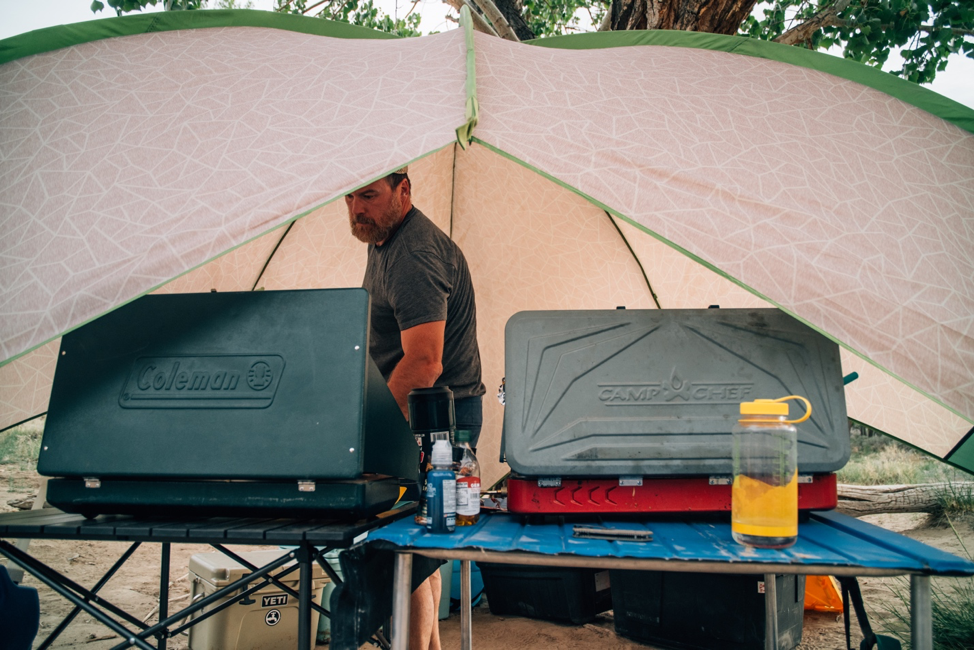
Water
Most recommendations fall between 1-2 liters per person per day. I recommend at least 2 liters for a trip like this to account for any day hikes, dishes and hand washing. We also brought an extra days’ worth for any emergency situations outside of our control.
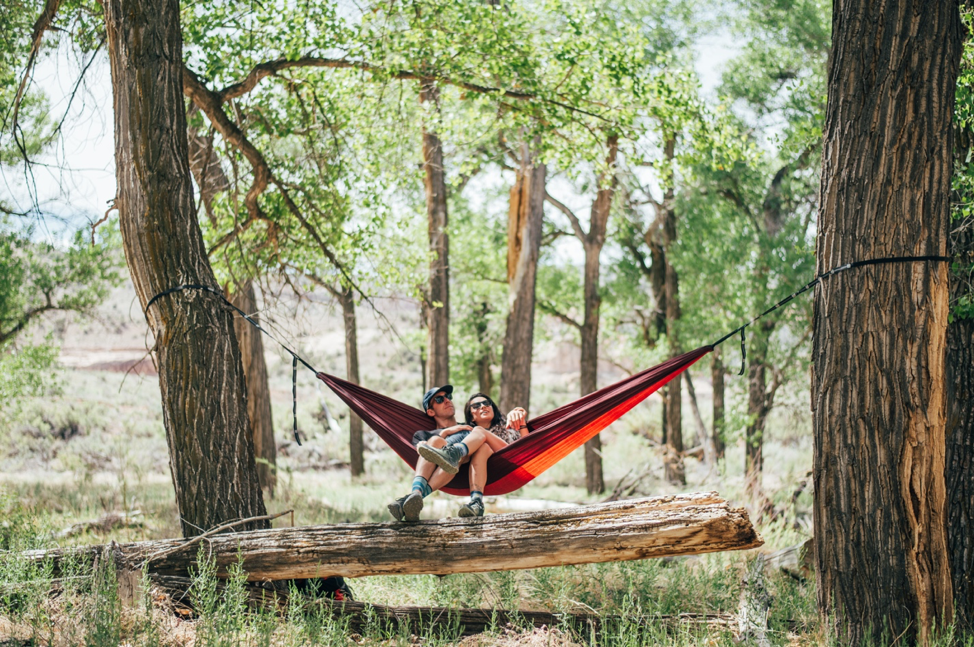
Fire Pan
That nightly campfire is one of my essentials for a proper camp setup. But we want to adhere to the rules as well. So, to avoid leaving any burn scars in the ground, most overnight river trips will require the use of a fire pan. This handy contraption keeps the whole fire contained as well as the ashes. We opted for a step above the most basic versions which allowed us to cook on it as well with the provided grill grates. Definitely research any fire restrictions/requirements in your adventure area before launching your raft.
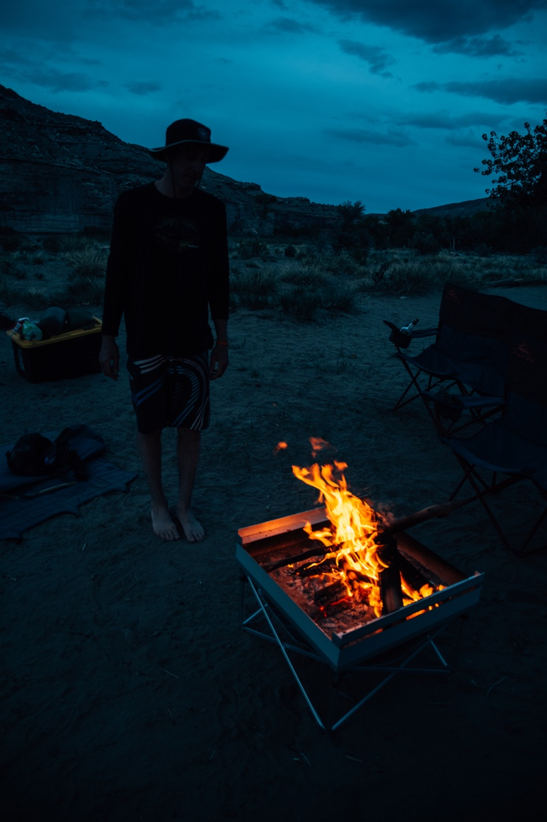
While a first-time raft adventure can seem overwhelming, it’s an adventure I can say is 100 percent worth the extra preparation and research. The river’s undeniable ability to force you to slow down and observe your surroundings, makes these trips unequivocally some of my favorite outdoor memories. A reliable respite from the daily routine and guaranteed to have you planning the next trip before you unload your raft.
